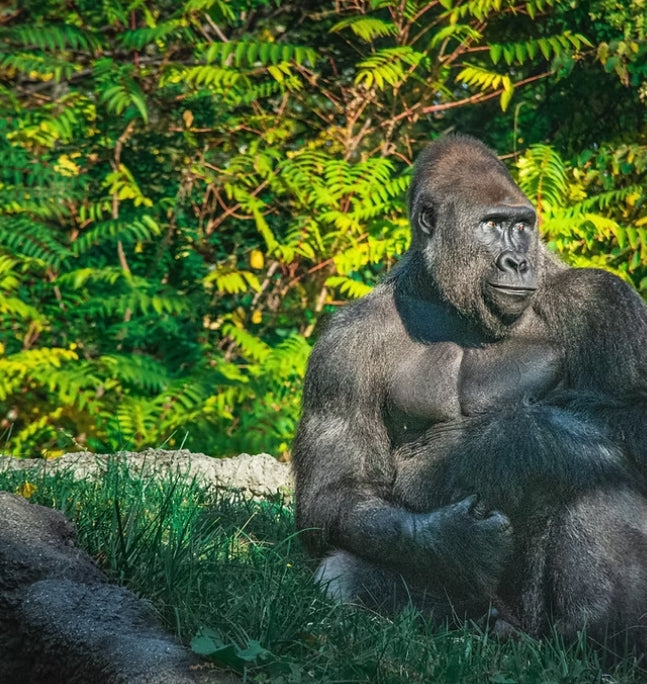
Mgahinga Gorilla National Park - where gold meets silver
Share
ABOUT THE PARK
The park takes its name from “Gahinga” – the local word for the piles of volcanic stones cleared from farmland at the foot of the volcanoes.
The British administration declared the area a game sanctuary in 1930; it was gazetted as a National Park in 1991.
Mgahinga has one habituated transboundary gorilla group.
Location: Kisoro district
Size: 33.7km2, making it Uganda’s smallest National Park.
Altitude: 4,127m
Though it is the smallest, it is the most scenic of all of Uganda’s parks. The park sits high in the clouds and it is one of the three Virunga Parks. Popular for gorilla trekking, volcano hiking, and golden monkey tracking, this is the ultimate destination for those looking for an adventurous safari in Uganda.
The Batwa were self-sufficient – and visitors can see how during a fascinating tour with a Batwa guide to learn the secrets of the forest.
Mgahinga Gorilla National Park sits high in the clouds, at an altitude of between 2,227m and 4,127m. As its name suggests, it was created to protect the rare mountain gorillas that inhabit its dense forests, and it is also an important habitat for the endangered golden monkey.
As well as being important for wildlife, the park also has a huge cultural significance, in particular for the indigenous Batwa pygmies. This tribe of hunter-gatherers was the forest’s “first people”, and their ancient knowledge of its secrets remains unrivaled.
Mgahinga’s most striking features are its three conical, extinct volcanoes, part of the spectacular Virunga Range that lies along the border region of Uganda, Congo, and Rwanda. Mgahinga forms part of the much larger Virunga Conservation Area which includes adjacent parks in these countries. The volcanoes’ slopes contain various ecosystems and are biologically diverse, and their peaks provide a striking backdrop to this gorgeous scenery.
Mgahinga boasts of over 76 mammals which include elephants, giant forest hog, bush pigs,bush back. Buffalos, leopards, A bird checklist of over 180 species including the 14 endemic Albertine rift notably the Kivu ground thrush and turaco.
Plan Your Journey
When to visit Mgahinga Gorilla National Park:
When you think of a safari in this park, most importantly, the dry and wet seasons are the 2 significant reasons you need to put into consideration. The wet season usually starts from March to May and from October and this is characterized by heavy rainfall whereas the dry season begins from June to September and from December to February. The dry season is usually more preferable as it comes with a low rainfall amount and the habitat tends to remain relatively drier thus favoring gorilla trekking and many other safari activities at the park.
HOW TO GET TO THE PARK?
By Road
The drive from Kampala to Kisoro, the closest town to Mgahinga Gorilla National Park is about 9 hours via Kabale. A 4WD vehicle is highly recommended. The route is very winds around one of the most beautiful pockets in Uganda; a journey that appeals to all senses. There is also a daily bus service for tourists that aren’t traveling in a private vehicle. Note that you will have to hire an extra shuttle from Kisoro town to the park’s boundary.
By Air
There are several options of flights from daily scheduled to chartered flights out of Entebbe International Airport and Kajjansi Airstrip to Kisoro Airstrip. Flights last about 1 hour and 10 minutes. From here, tourists will transfer over a murram road to arrive at the park.
What to bring while trekking the Gorillas
To enjoy the gorilla-tracking exercise, carry along the following:
- Carry rain gear or a Rain Coat for changeable weather.
- Sunscreen and a hut for the random weather.
- Water and food – Hiking boots with a good grasp are ideal for the steep mud-covered slopes.
- Carry binoculars mainly for watching birds and far animals.
- Gloves
- A warm cardigan
- Thick trousers and a long
- Long sleeved tops are ideal for tracking.
- Video- filming is allowed in the parks though not outside the park
- Waterproof container for their cameras
- If you wish to wear a hat, a baseball cap is recommended.
- You can also hire most of the above from the SAFARI MOOD office.
